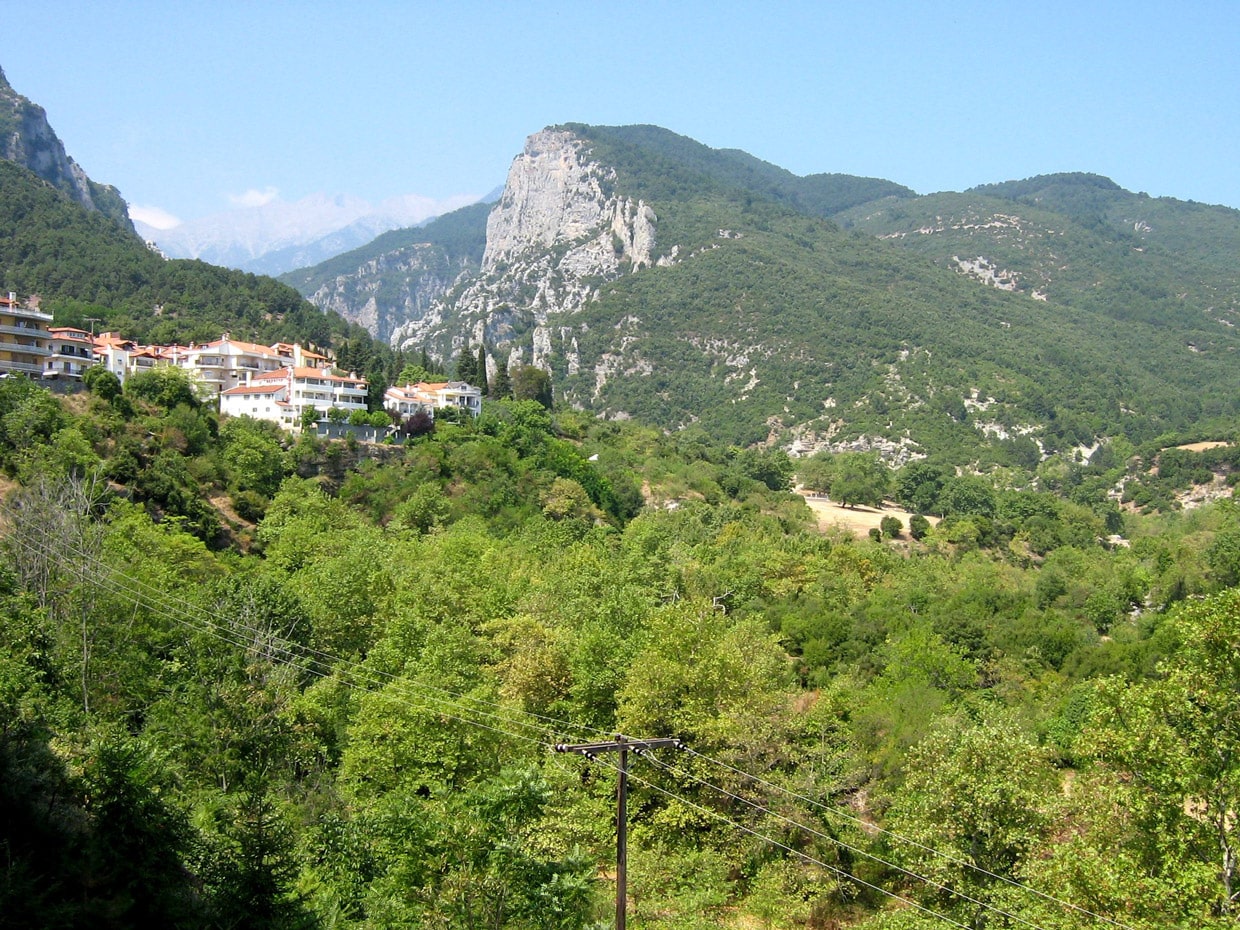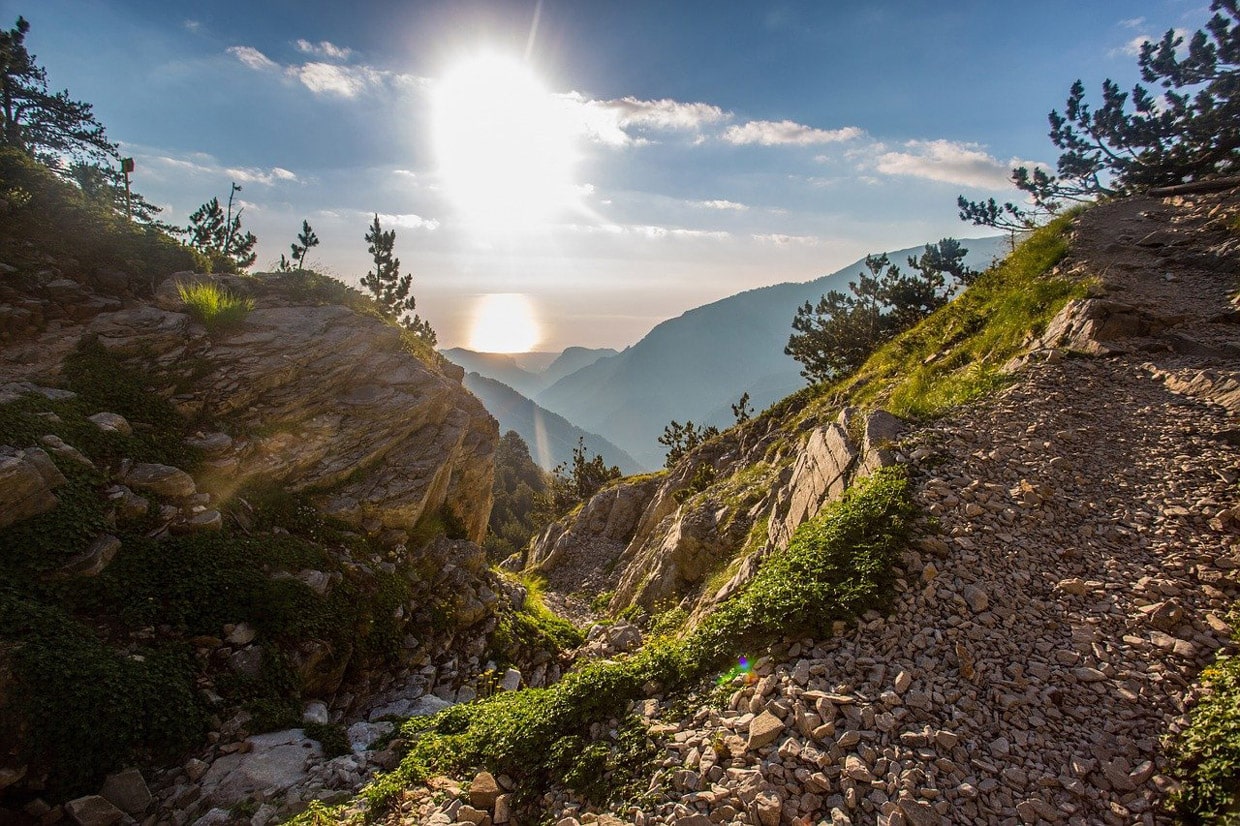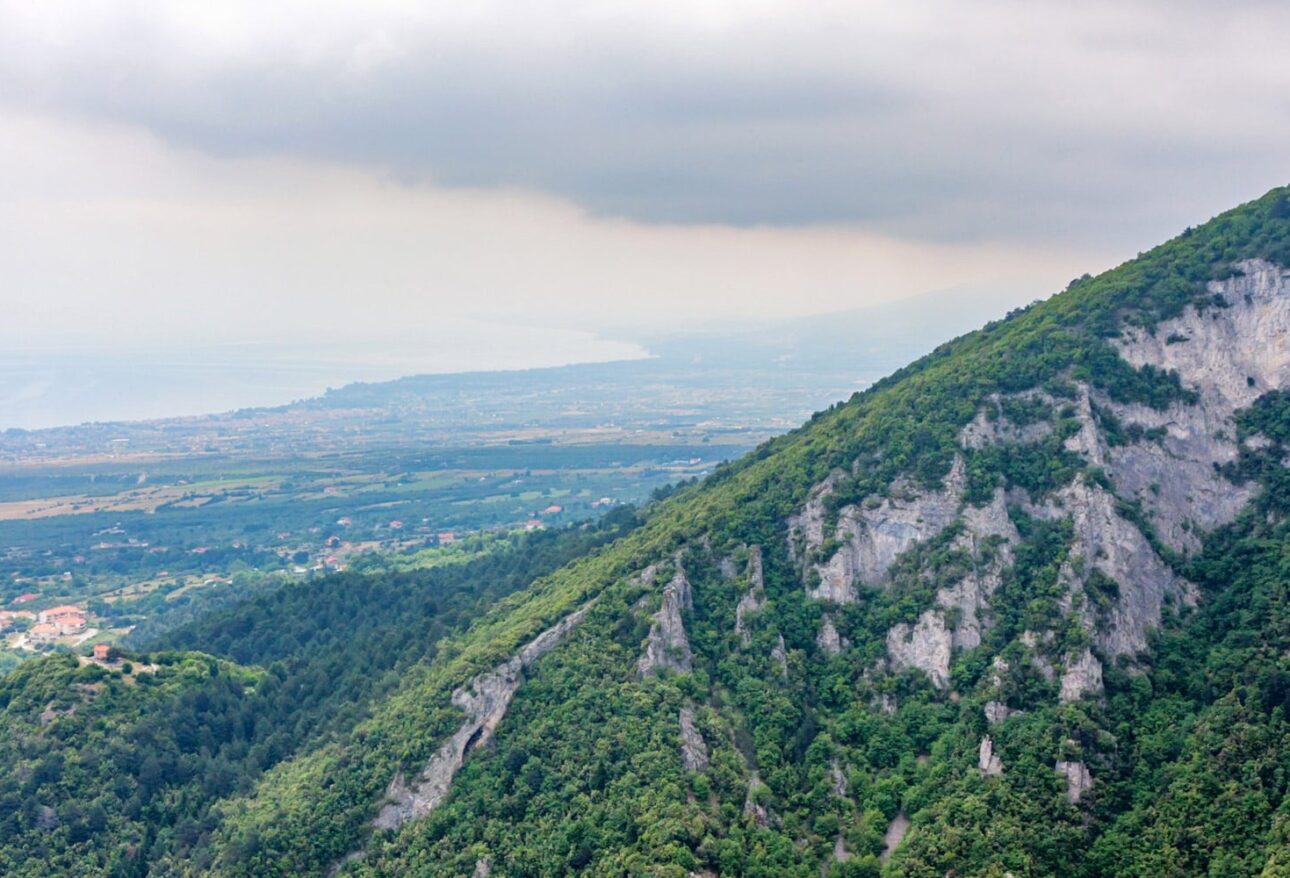When it comes to Mount Olympus, the first thing that comes to your mind is the house of Olympians, gods, and goddesses of Greece. Here is where Cronus swallowed his children, and Zeus, the god of thunderbolts, cut his stomach with the Spear of Triam. He threw him into the pit of Tartarus, and Olympians celebrated their victory by building this colossal and imperial mountain.
History
The home of the Twelve Olympian gods was called Olympus in the religion and mythology of ancient Greece and goddesses. Because of the infirm resources, we know little about the origin of this Pre-Greek name, but thanks to Homer, the brilliant writer of odyssey and Ulysses, this mountain now has its unique story that no other natural Attraction On this planet has. In Homeric Greece, this mountain is referred to as a synonym of many words like “sky,” “the seat of gods’’ and “heavenly threshold.”
Mount Olympus is the highest mountain in Greece that contains deep gorges and 52 enormous peaks which Mytikas is the highest one that is also known as “The Nose” or The house of gods, which rises to 3000 meters and is one of the highest peaks in Europe. It is part of the Olympus massif close to the Gulf of Thermaïkós of the Aegean Sea, on the border between Thessaly and Macedonia.
Two hundred million years ago, this sedimentary rock mountain had laid down in a shallow sea. After geological events, the depressions and plateaus had been created about a million years ago, and with the temperature rises, the ice melted, and it created enormous crushed rocks in the lowest places and spread out all over the region from foothills to the Aegean sea.
Olympus experienced many wars with every inch from the north to the west. In 168 BC, the great war of Macedonians and the Romans happened near the ancient Pydna, which is in the north. In the ancient town of Heraclea at Macedonia’s gates is located Platamon Castle, built between the 7th and 10th AD.
For 400 years of the Ottoman empire, The mountain was a hiding place and operation base. After the liberation from the Ottoman Empire, during the German invasion from 1941 to 1944, the mountain was one of the major centers of the Greek Resistance army, and two years after that, the Greek Civil War began in Litochoro.
Hiking Mount Olympus
Many years ago, when gods were the padrone of Olympus, mortals weren’t allowed to take a step on mount Olympus. Lucky for you, they are all dead now! So you don’t have to be Hermes with a pair of flying shoes to go up the mountain of gods.
Pro hitchhiker or amateur mountaineer? It doesn’t matter. It’s estimated that 10,000 Mountaineers come here from all over the world to take a hike to reach The Nose of the mountain that goes through charming small churches, wooden bridges and charming mountain geology, and unique lakes, waterfalls, and valleys. You can easily enjoy tackling the gorges lofts of this holy mountain. For those inexperienced ones, there are several tackle guides in the nearby town of Pieria that can help you reach an ideal point and also make you prepared by equipment and clothing and everything you need to be prepared for.
You can also have a road trip to the national park parking and hike the rest of the road. If you want to climb the mountain to the Mytikas that heights 2917m on your own, there are few routes that you can choose to walk up and enjoy the amazing Greek landscapes and goddess-like flora. These routes start from Grotsia, Prionia, Kokkinoplo, KEOAX military ski center, Krevatia, and Refuge Christaki. Now, we want to introduce you to two of the most pleasant selections that you can choose, and neither of them is very technical: Gortsia Route and Prionia trail.
The Prionia Trail
To get there, you first will have to get to Litochoro. If you are staying in Thessaloniki, you can use a bus or train to get there. This trail is 1,100m long and is part of the international hiking path, and E4 is the sign of the trail, which also is known as “Enipeas Gorgeter” by locals. Prionia is 18 km away from Litochoro and is the highest point which can be reached by car and with its 24-hour parking lot, you can drive off the road and leave your car there with no worry. You either can take a taxi from Litochoro that costs you 25 euros or even go all the way by your feet to the Enipea spring, where Prionia Trail begins.
In The Prionia Trailhead, you can find water resources, bathrooms, a parking lot, a taverna, small food buffets, and all other helpful facilities. Don’t forget to cater your water and snack supply which you will need along the way because there is only one water station from Prionia to Spilios Agapitos Refuge, and it has a 40 minutes hike to be reached. There are other water stations along the way, but visitors claimed that they’re mostly dry. So it’s safer to have a big water supply before entering the trail in case of dehydration, especially during the summer.
From the Prionia Trailhead, your three-hour hike in the forested trail to Spilios Agapitos Refuge starts, which longs 1km. This route is the most frequented one and offers you charming greeny views along the way. The beginning of the trail is protected from the sun heat by the trees, but there is an exposed zig-zagging part at the end that makes you on your own from sun exposure.
Once you find yourself surrounded by impressive old Bosnian pine trees, you have reached Spilios Agapitos that is the first refuge along the way and is on a natural flat. Because of difficult Greek names, the refugees are also referred to by alphabet letters, so the Spilios Agapitos is also known as refuge A.
Spilios Agapitos Refuge
You can rest for a night in Spilios Agapitos refuge. It has 110 beds and a restaurant, but Beware that there is no other refuge to stay after this refuge. From refuge A, a road directly leads you toward Mytikas, but we offer you to stay till the next morning because it may get a little crowded. Later, you have another three-hour hike to the lower peak of Skala, where you can find an unbelievable view that fits Albania and Bulgaria in itself.
If you decide not to ascent Mytikas, there is the road to Skolio, which is the second peak of Olympus. This hike tends to be shorter and less challenging for amateur hikers but if you want to experience the ultimate Olympus hiking, continue your hike to the Nose of Zeus. The road is quite gentle at first, but after a while, it gets steeper and rockier. After a 2-hour hike, you can see the greek flag which congrats on your conquest of the house of gods. This will become a once-in-a-lifetime experience for you when you see the enormous clouds beside you and the unimaginable landscape of Greek which shows you how it feels to be a god.
A Tip for Hercules
If you find yourself as challengeable as Hercules, there is an alternative route through Louki to Mytikas because of its steep hazard. Upon reaching Prionia, after a 10-minute walk, you will find “The Bath of Zeus.” If you are a fan of the cold swim, you can rest your body there, but it really needs your strength and resistance against 0-degree water! Despite its harshness, this road has its own beauty that you shouldn’t miss if you see yourself, Hercules.
The Gortsia Route
This route is a little easier and less crowded than others. It also has much more stunning views and is less rocky than others. You can also enjoy visiting the Kokkola Refuge and the Apostolidis Refuge along the way at 2,600 height, which is accessible by reaching the Muses Plateau. About 14 kilometers along the Litochoro to Prionia trail, there is a taper road to the right that leads you off to a parking lot and a dense forest.
Here is where The Gortsia Route begins. It starts with a wide path and later, you can climb one steep branch and another meandering one to reach Skourta and the plateau of the muses that takes around 6 hours. There are a few divided roads along the way, some of which have amazing alpine landscapes with low vegetation, and the rest of them contain beautiful flora and forest; the choice is yours.
The rest of the road is not so difficult, but you have to use your hands and feet to go through sharp rocks and be careful of the falling rocks. You can also get safety helmets from refugees. With a brief scuffle and continuing to the foot of Stefani’s peak, you will reach a couloir that leads you off straight to the summit. Now you can take a deep breath from the same clear air Zeus used to own and finally realize what an astonishing view a god palace can have.

The Monastery of Agios Dionysios
They established the original monastery in 1542 by Saint Dionysios, the island’s patron saint in Litochoro, and the name originally referred to “The Holy Trinity.” During various wars that happened throughout history, it served as a shelter for civilians and a strategy fighting operations center. The monastery was destroyed and rebuilt in different periods of time. For the First time, it was destroyed in 1821 by Veli Pasha and later in 1943 by Hitler’s invasion. During World War II, the greek resistance army used the monastery as a hidden place.
So later on that, German Wehrmacht ordered bombing the place and exterminating it. The ruins of the original Agios Dionysios Monastery still remain in the Litochoro to Prionia road, and tourists can enjoy strolling around between the ruins and restored buildings. After WWII, monks left the original site and moved 500m to the northeast and established the new one in Metochio, which was farming land at first, and expanded it into the most important monastery in the Pieria Prefecture.
Despite being an Orthodox Monastery, the female visitors can’t have access to the monastery. But there are even more marvellous places near the major complex that you mustn’t miss for any reason. During the few wars that happened, monks hid their valuable treasures such as old documents, statues, holy icons, even skulls and bone pieces of saints.
Now, they have been brought together and displayed in the museum that is sited to the east of the monastery. But more astonishing at all, there is a black-and-white photo collection at the entrance of the museum that shows the original monastery before the Germans destroyed it. It only hung there for a few years and was secretly taken by a beloved german soldier named Karl Faber and later sent to the monks so that the glory of the building doesn’t cease from history.
The small church of saint Agios Dionysios was slowly built in early 1925 in the classical orthodox style and was finally completed 23 years later. That locals believe it’s a miracle place because it did not have any damage from the 1952 earthquake that almost destroyed all other buildings around the island. The church contains the body of saint Agios Dionysios, laying there in a silver-encrusted sarcophagus.
The Church of Agios Dionysios
The church of Agios Dionysios is very amazing, with spectacular red velvet seats, marble columns and consoles, and other wooden items that are decorated with elaborate marquetry. There is even a little basket with ball-point pens next to the depiction of Jesus, which religious people write their needs on a piece of paper and put in the basket, in hopes of Jesus Christ will listen to them and make their requests come true. You also can see the resembles of the bell tower and harbor from San Marco church in Venice. The church also contains the resembles of the harbor and the bell tower from San Marco Church in Venice.
Agios Dionysios is considered The Saint of Forgiveness. He hid a murderer and helped him to escape from Litochchoro and flee to the Ionian Sea, though the slain was his own brother. Also, he was a trustworthy priest, and many locals came to him for confession and giving them advice. So today, Agios has many worshipers from Greek and the rest of the world that come to this island every year, and celebrate two important events and pray to him for his blessing and protection.
Celebration
The celebration comprises two glorious festivals that each of which lasts three days. The first one is from the 23rd to the 26th of August, which celebrates the day his body remains exhumed from The monastery and moved to Strofades, as he requested his relics must be kept after he dies. And the next one starts on December 16th until the 19th, the day that he died.

Where to Stay
Unfortunately, for nature lovers and hitchhikers, it is illegal to camp in the mountains or national park and all over Greece, but hopefully, “Camping Hellas” has provided a certain section in the national park for you to camp. For those of you that prefer a convenient place to say, You can find 2-star to 5-star hotels in Litochoro, near the mountain or Aegean sea, which is just a few kilometers away from the mountain.
What to Eat
Vegetarian Friendly or steak house? Gluten-free or Greece pasta? You mustn’t worry about your food relish. It is impossible for you to find a certain place for a delicious meal or drink when there are all different modern and traditional restaurants and great well-priced, luscious wine that you can find anywhere near the Olympus mountain with frugal prices.
In Prionia, you can find a few buffets with acceptable food quality, but if you want to experience Greek taste to your bones, you must consider restaurants and dining places at Litochoro, if you are up to the Greek ambrosia taste and Dionysus’s hand made wines.

How to Get There
By Train
From Thessaloniki, you can get on the train that directly goes to the destination after an hour but with a little car trip that costs around £20. If you want to catch the train from Athens, at first, you must catch a train to Larrisa that takes 5 hours and after that, another train to Litochoro that takes half an hour, with the same car trip after that. But be careful, the trains arrive every 3 hours. So, calculate your timing or read some Greece mythology while the train arrives.
By Bus
In Thessaloniki, get on the bus at the main coach terminal and spend £9 for a 2-hour road trip that includes an hour waiting time in Katerini. From Athens, it takes 8-hour with the same waiting time in Katerini.
By Car
We suggest the car option if you are hanging in Thessalonica because it takes nearly 6 hours from Athene on the E65 and E75 roads, which road requires payment for use and may seem a little challenging and taxi may come expensive for you. From Thessalonica, it is a 3-hour road trip on the E75 and EO 13.
When to Go
The best months to visit and climb Olympus is from May till September. In November, you can have the best vogue of your life because of the combination of autumn’s inclination with the landscapes that are going to hit your eyes and stay in your mind for the rest of your life. But if you enjoy more from the history and amazing culture of greek, don’t even think of missing Saint Agios Dionysios festivals in August and December.





